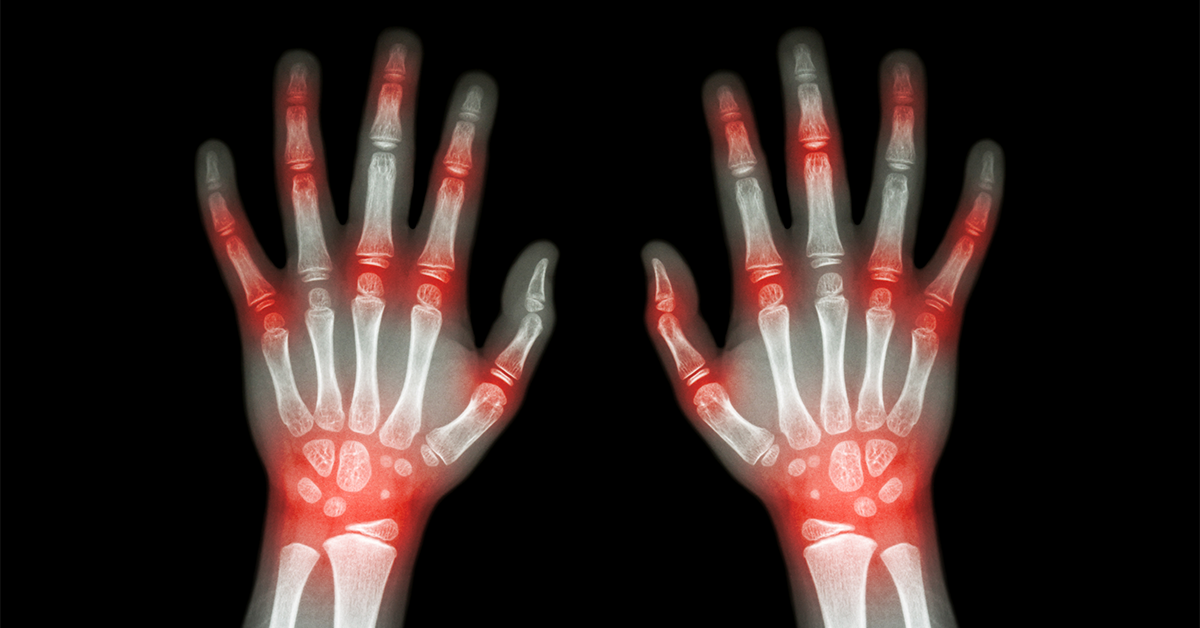Arthritis, which is inflammation or degeneration of the joints, affects children as well as adults. Arthritis in children is called juvenile arthritis, and July is Juvenile Arthritis Awareness Month.
Juvenile arthritis can cause permanent joint damage and impact the child’s growth and physical development, so early intervention and treatment is imperative. Read on to learn more.
The most common type of childhood arthritis is juvenile idiopathic arthritis (JIA). The term “idiopathic” means the exact cause for the disorder is unknown. We do know that JIA is an autoimmune disease. In this case, the body’s germ-fighting immune system malfunctions and targets the joints’ synovial membrane (tissue lining), causing inflammation.
Researchers don’t know why this happens but believe a combination of genetic and environmental factors may be involved.
In the US, juvenile idiopathic arthritis affects about one of every 1,000 children, or about 300,000 children. There are several types of JIA. The three main types are oligoarticular, polyarticular and systemic.
About 50 percent of children with JIA have the oligoarticular type, which typically affects fewer than five joints, most often the knee, ankle and elbow. In most cases, this type is mild and symptoms may lessen or go away over time. Children with oligoarticular arthritis are at high risk for developing inflammation of the eyes (uveitis). To prevent vision loss, your child should have regular examinations by an eye doctor.
About 30 percent of children with juvenile arthritis have the polyarticular type, which affects five or more joints. It often affects the smaller joints such as those in the hands and feet. It can, however, impact larger joints, including those in the neck and jaw. Typically, polyarticular arthritis affects the same joints on both sides of the body.
Systemic arthritis, also called Still’s disease, occurs in about 10 to 20 percent of children with JIA. It affects the entire body, not just the joints. Systemic JIA typically begins with a fever and rash that come and go. In many cases, it leads to inflammation of internal organs such as the heart, liver, spleen and lymph nodes. If not treated appropriately, children with systemic JIA may develop severe arthritis in their joints that continues into adulthood.
Symptoms of JIA may come and go. Sometimes, symptoms are worse (flares) and sometimes symptoms get better (remission). Symptoms vary depending on the type of JIA and may include joint pain, swelling and tenderness; joint stiffness; limping; difficulty with fine motor activities; persistent fever; rash; weight loss; swollen lymph nodes; fatigue or irritability; growth problems; eye redness or pain; and blurred vision.
To diagnose and treat JIA, your child’s pediatrician may refer you to a pediatric rheumatologist, a specialist in arthritis and related conditions in children. The rheumatologist will perform a physical examination and review of your child’s symptoms. The specialist may order tests on your child’s blood and joint fluid, as well as x-rays or an MRI to help rule out other causes for the symptoms and classify the type of arthritis.
The goals of treatment for JIA are to control symptoms, prevent joint damage and maintain function. Treatment also aims to identify, treat and prevent complications of the disorder.
Treatment for juvenile arthritis generally involves medication and therapy. Medications used include nonsteroidal anti-inflammatory drugs (NSAIDs), which can often quickly reduce inflammation and relieve pain. If NSAIDs don’t relieve symptoms, the next step is disease-modifying anti-rheumatic drugs (DMARDs).
DMARDs suppress the immune system on a broad level, helping to prevent progression of the disease and saving the joints from permanent damage. However, these drugs may take weeks or months to relieve symptoms. Biologic response modifiers are another type of medication that block specific immune signals that cause inflammation. They help to prevent progression of JIA, achieve remission and protect against permanent joint damage.
Corticosteroids are strong inflammation-fighting medications that typically bring fast relief when injected into an affected joint. However, they have many possible side effects, including weakened bones, upset stomach and mood swings, so they are generally only used for short periods.
Physical and occupational therapy play important roles in the treatment of children with arthritis. Physical therapy can help relieve pain, improve and maintain range of motion in the affected joints and strengthen the muscles that support the joints. Occupational therapy teaches how to increase or preserve mobility so the child can more easily perform activities of daily living.
A physical or occupational therapist may recommend your child wear a splint or brace to protect the affected joints to reduce inflammation and prevent contractures, the tightening or shorting of the muscles and joints, which causes a deformity.
With prompt and appropriate treatment, most children with arthritis develop normally and can live active, full lives.





Leave a Reply